coralreefer
New member
ill be looking forward to it
I'm wondering (incredible thread BTW!) if overlooking water crystals for all applications would be a bad thing?smokeymacpot- I'm actually afraid water crystals may be too much............. water crystals are used for holding moisture for use later, with the Earth hole you shouldn't need that, the only place I'd consider using them in a Earth hole would be in the wick its self, they really have no place or need anywhere else in the hole.
Are you asking about water crystals in non Earth Hole applications? That quote is only referring to Earth Holes, and yes, crystals are very much used in other outdoor grows.
For sandy soil the crystals definately help, but you need to add organic material like peat, compost, manure, etc also.
If your question is about growing in sandy soil in general, I had the same question a couple years back and got some good answers.
http://www.icmag.com/ic/showthread.php?t=92753
Can I ask how you plan on preventing root rot? You don't want moist soil all the time, as your design seems to do.
Based on your design capillary action would always be taking place thus always keeping soil moist. The only way you would prevent is it to have some sort of timer which would activate a stop of the capillary action for certain periods of time etc.
Correct me if i'm wrong, or if I missed something

Earthhole test, Sep 28- Oct 6
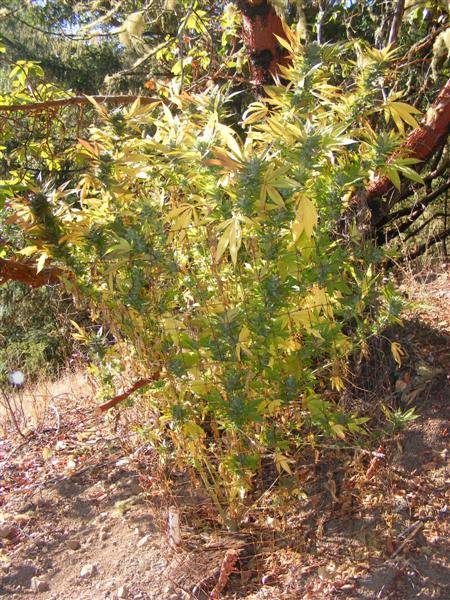
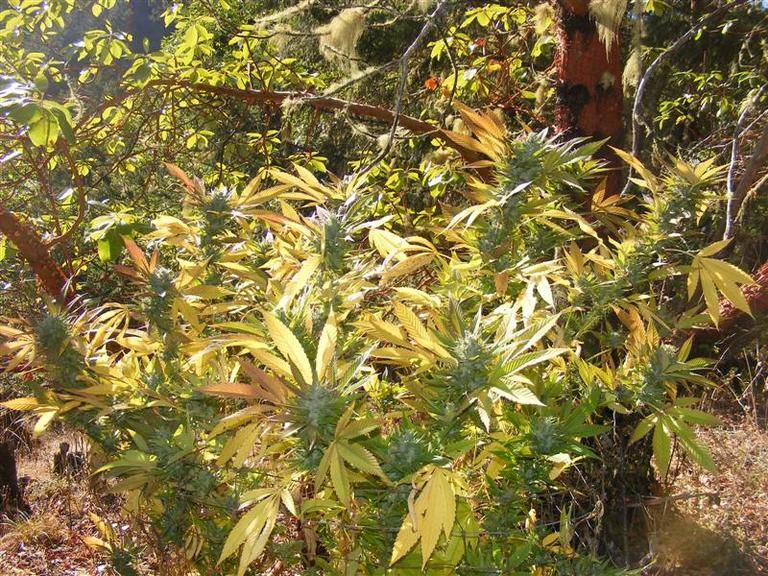
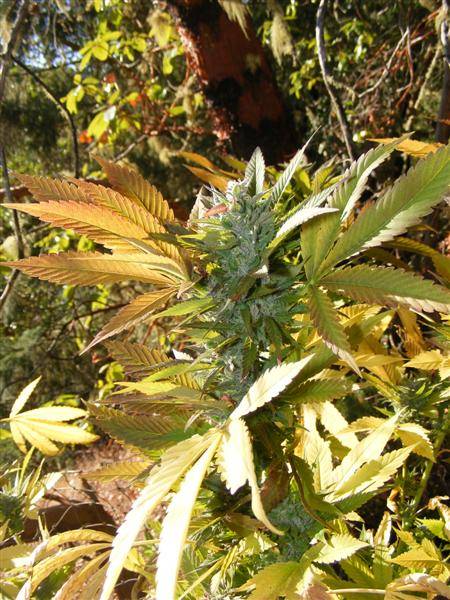
Daily totals
Sep 28- High 79F, Low 47F, Avg humidity 47%
Sep 29- High 63F, Low 45F, Avg humidity 61%
Sep 30- High 62F, Low 40F, Avg humidity 65%
Oct 1- High 71F, Low 37F, Avg humidity 56%
Oct 2- High 65F, Low 38F, Avg humidity 61%
Oct 3- High 59F, Low 39F, Avg humidity 58%
Oct 4- High 52F, Low 37F, Avg humidity 78%
Oct 5- High 61F, Low 36F, Avg humidity 66%
Oct 6- High 73F, Low 33F, Avg humidity 58%
Week totals
Average high 65F, Average low 39F, Average mean 52F
Average humidity 61%
Total Precipitation: 0.16 in
Water used in this period= 6 gallons in 9 days(would have been 4.6 gallons for a week
My climate made a big shift from mid-summer type weather to my normal moist/cool fall weather during the last watering period of the season. Water usage also dropped, this time I believe the drop in water usage was just as much due to the plant being finished growing bud, as it was for the shift to cooler weather.
I harvested on Oct 6, this is 5-15 days earlier than I normally harvest OR95, but since lots of activity by outdoorsy folks has been observed(on the land I was growing on), and since the Deer season opened right around that time, I decided to pull them early. By no means was the bud unripe, I tend to let as many as 75-90% of the trichs turn amber(very stony), these were about 33% amber.
I'll continue with more Earth hole reports in the following post.
This season I experimented with my twist on the popular Earthbox planter, which I call the Earth hole. I wanted to determine if it would be worth developing into a Guerrilla irrigation system for Guerrilla growers in extremely dry climates.
A important figure in determining the viability of the system is its efficiency in turning water into bud. Water is hard to come by in my backcountry, it either needs to be hauled good distance from the few natural sources, or else be collected and stored during the rainy season, both techniques are costly either in time and labor or cost and time, at any rate water is at a premium.
The knitty-gritty
First I need to tally up the total water used by my Earth hole plant, all the way from planting in late May to harvest in early October.
The total water used by this plant was 86 gallons.
Now lets look at the bud yields. First let me explain how I grade my bud, I have three basic grades:
#1 buds are the best buds, they usually grow on the top part of each major branch of the plant. These buds are very dense, covered in sticky resin, and contain very little leaf/stem. These are buds I could clean up and sell locally for $50-1/8oz.
#2 buds come from further down the branch, they contain more stem/leaf than the #1 buds. I don't mind smoking these buds, but I have the patience to sit and peel the remaining leaf/stem before packing the bowl.
#3 buds are the poorest, these are the same that are often called popcorn by some, and scraggle buds by others. Most large growers put these into the trim for processing into Hash, I often do further cleaning on these buds and use it in large joints.
Normally my guerrilla plants consist of equal parts of each grade, the #1 bud normally coming only from the top part of the largest tops. Also my normal average total yield is 2-3oz per plant, with a couple 4oz plants also coming in during my 2007 season(with most of the #1bud destroyed by mold).
Here are the breakdowns on my 2009 Earth hole plant:
#1 bud: 4.55oz
#2 bud: .63oz
#3 bud: .96oz
Total bud harvest: 6.14oz
The thing that is most noticeable about this plant first is that it is at least double the size of my normal plant, the second thing is that the bud I did get is of much better quality than normal for me. Not only the most light exposed top buds got large, dense, and crusty, most of the secondary buds that would normally be #2 grade were just as dense and yummy!
Part of the increased quality is due to my use of a topped plant that grew into a bush, rather than my normal x-mas tree shaped plants. I was also amazed to see this performance from a plant that was grown under the edge of the forest. By no means was this plant very shaded, but it also didn't get total unblocked sunshine for more than 5 hours of the day. I chalk up the quality and yield of the bud to the fact that plant was not only never thirsty for the water it needed to survive, it basically had all the water she ever wanted all summer long, and it did this in only 10 gallons of very rich organic soil.
But how water efficient was the earth hole?
Well 86 gallons of water divided by 6.14oz of bud = 14 gallons of water per Oz yielded.
How does this compare to my past hand watered plants? In 2007 I had several large plants, the largest yielded about 5oz, and 3 others around 4oz. All these plants had holes lined with plastic to help retain water around the plant roots.
The 5oz plant received about 64 gallons-12.8 gallons per oz.
The 4oz plants got about 55 gallons each 13.75 gallons per oz
Comparing to the 2007 season, the Earth hole seems to be right in there for water efficiency, especially considering a larger percentage of the Earth hole plants bud was high grade dense bud.
The advantage of the increased bud quality would be enough for me to switch totally over to the Earth hole, but the fact that I can build the reservoir to be larger on future Earth holes and therefor extend visits to several weeks rather than weekly further sweetens the deal. In short.............
Earth hole experiment 2009 is a success!!
I want to point out that I never had:
Drowned roots
PH problems
Problems due to stagnant water(75% of the water I used was stinky crap)
Any sickness/stunting, at all!
I'm already forming plans for next season, for Earth holes that will go 3-5 weeks between visits, and even possibly for a Earth hole that will go nearly the whole season with out refill.
Here are some pics of the recovered root ball, I had intended to bring the rootball home and wash it for a good look at the complete root system. But the process of hauling it out of the hills broke many of the smaller roots.
There were many predictions that the roots would grow down the wick and fill the reservoir, but as you can see in this pic pretty much none grew out of the wick into the rez.
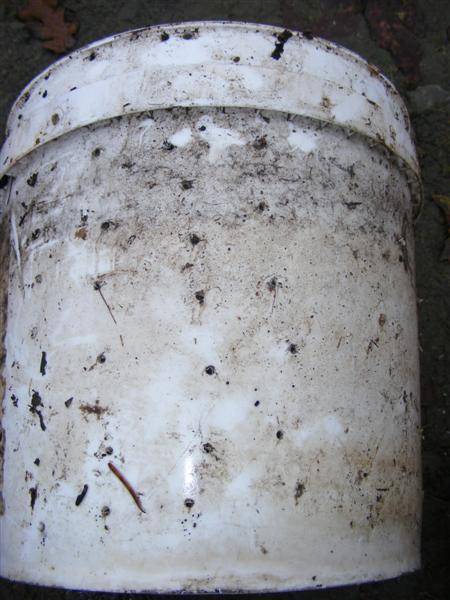
In this pic you can see the core of the wick removed from the bucket, many roots grew down the side of the wick, but fewer were found inside the wick itself. The low number of roots in the wick tells me that the plant received most of its moisture through the capillary action through the wick to the soil, rather than straight from the rez, allowing the plant to use the nutrients incorporated into the soil. NOTE: The wick is upsidedown in this pic-
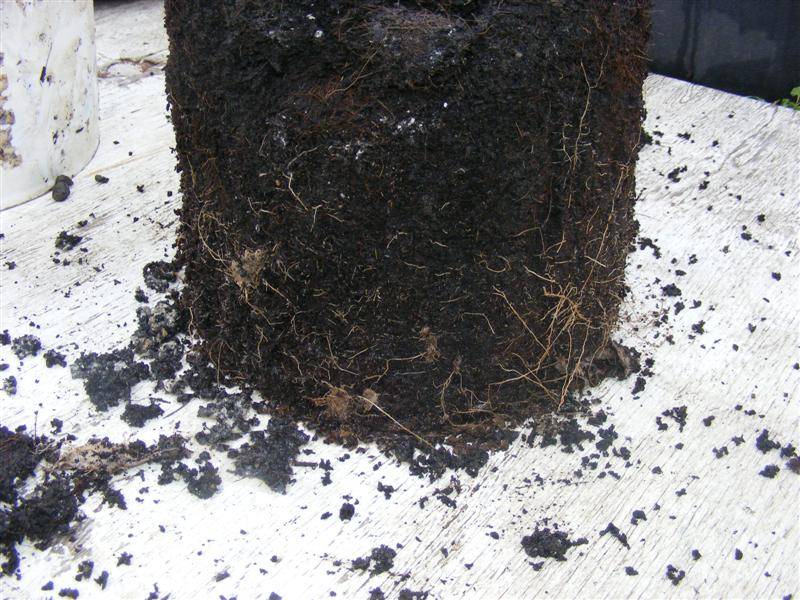
Here is the original garbage bag I used to contain the 10 gallons of soil of the grow, inside is the rootball of the plant.
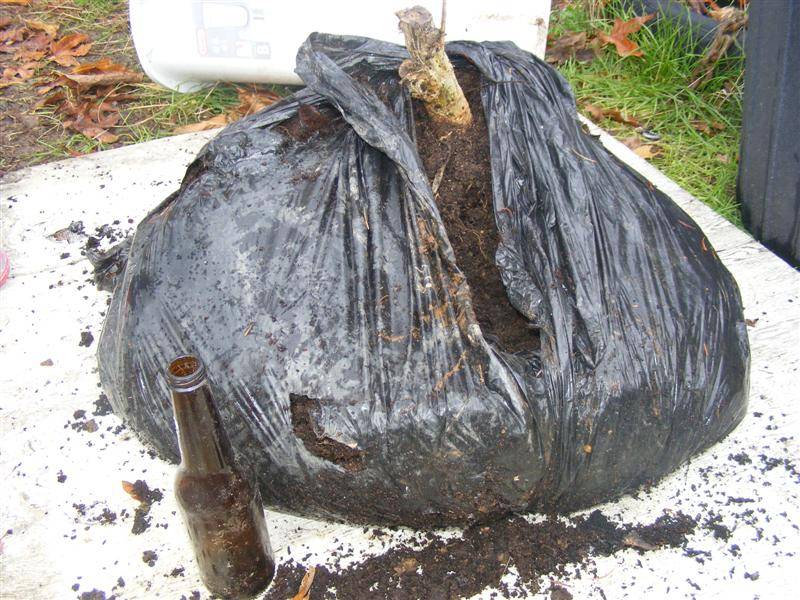
Through the bulk of the soil, many smaller roots snaked everywhere, no roots over the thickness of spaghetti was found very far from the main rootball.
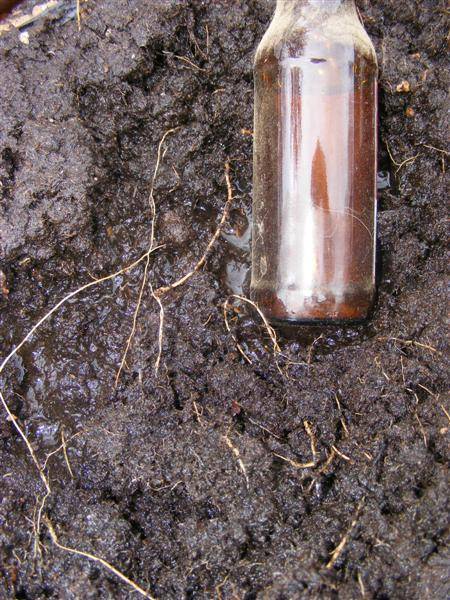
This was the main root ball, in the center of the ball of smaller roots is one large "carrot", along with a handfull of smaller "carrots" wrapping around it.
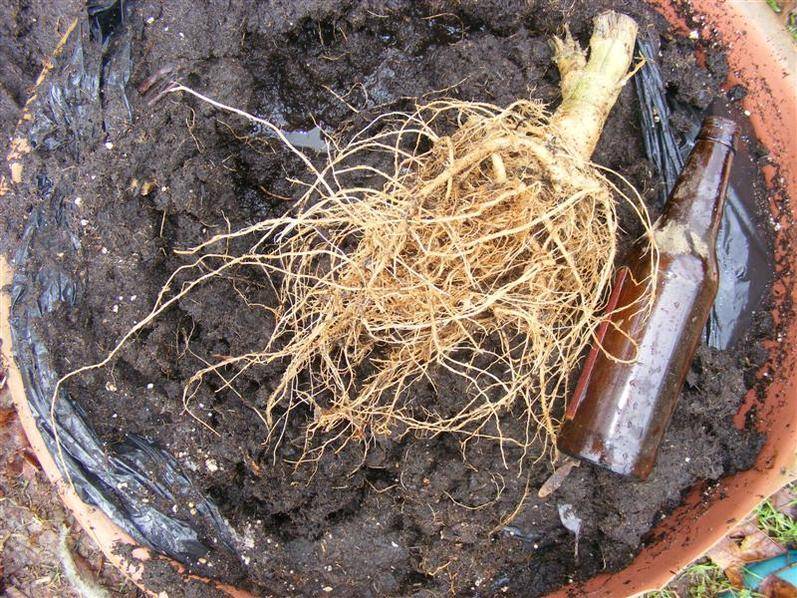
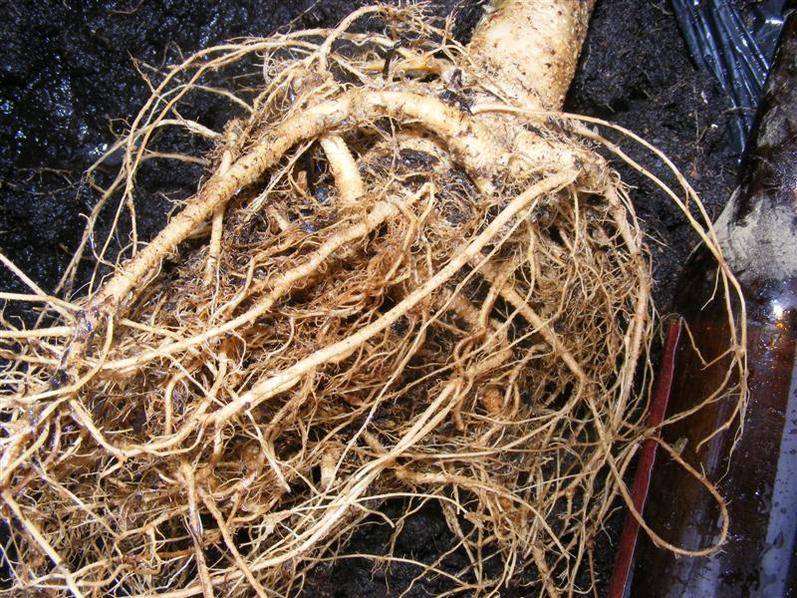
Can I ask how you plan on preventing root rot? You don't want moist soil all the time, as your design seems to do.
Based on your design capillary action would always be taking place thus always keeping soil moist. The only way you would prevent is it to have some sort of timer which would activate a stop of the capillary action for certain periods of time etc.
Correct me if i'm wrong, or if I missed something
Very Informative!After some thought, I think I'll go ahead and try to answer your question, even though the experiment was a obvious success!
First, are you familiar with DWC? Its a type of hydroponics where the root system of the plants stay entirely submerged in their nutrient solution, in deep buckets or tubs. At first you might think "how do the roots stay alive sitting in water 24/7?". The answer is........air! Gobs of air! Air pumps continuously pump fresh air into the water, providing the precious oxygen needed by the roots. Basically, the roots will live, even thrive in very wet environments(even under water), provided they get what it is they actually need from the air(oxygen).
"Root rot" is not caused by roots living in a environment that is too wet, root rot is what happens after your roots die due to suffocation(lack of oxygen).
Now you may ask, "so how does the Earth hole keep oxygen available to the roots?" The answer is simple, the potting mixture in the Earth hole never gets saturated enough to exclude air, its actually (nearly)impossible for that to happen(see the last paragraph).
The moisture must reach the roots through the capillary action of the potting mix, water passes up from the reservoir from one fiber of the potting mix to the next, until that moisture reaches a thirsty root, who then absorbs the moisture. The water only travels from one fiber to another that touches it, there is never any pooling of water outside of the fibers, if water was to somehow leave the chain of fibers, it would simply trickle back down due to gravity, into the wick, but in reality this won't happen, if no roots are drinking, the lifting of water will simply slow to a stop until thirsty root starts the flow again.
In between the fibers exists many, many empty spaces, through these spaces, oxygen can reach the roots, voila! Happy roots!!!!!
New growers are often warned by the wise to not over water their plants, and to always use planters with drain holes for excess water to flow out. Because the water is being added from above(whether it is needed or not), it can be possible to suffocate your roots by adding too much water to often, each time you water you purge the air from the empty spaces between the fibers of the potting mix, if you do it too much you suffocate the roots, they die, and you have a case of root rot.
Because the Earth hole works off of capillary action, it can only take the water that the fibers themselves can hold, the empty spaces between the fibers remain intact. The exception of course would be a heavy rain that could over saturate the soil from above, but this can be prevented by shielding the soil with plastic mulch, only a small area around the stalk of the plant need be left open to allow air to enter the planter portion.
Does any of this make sense???
